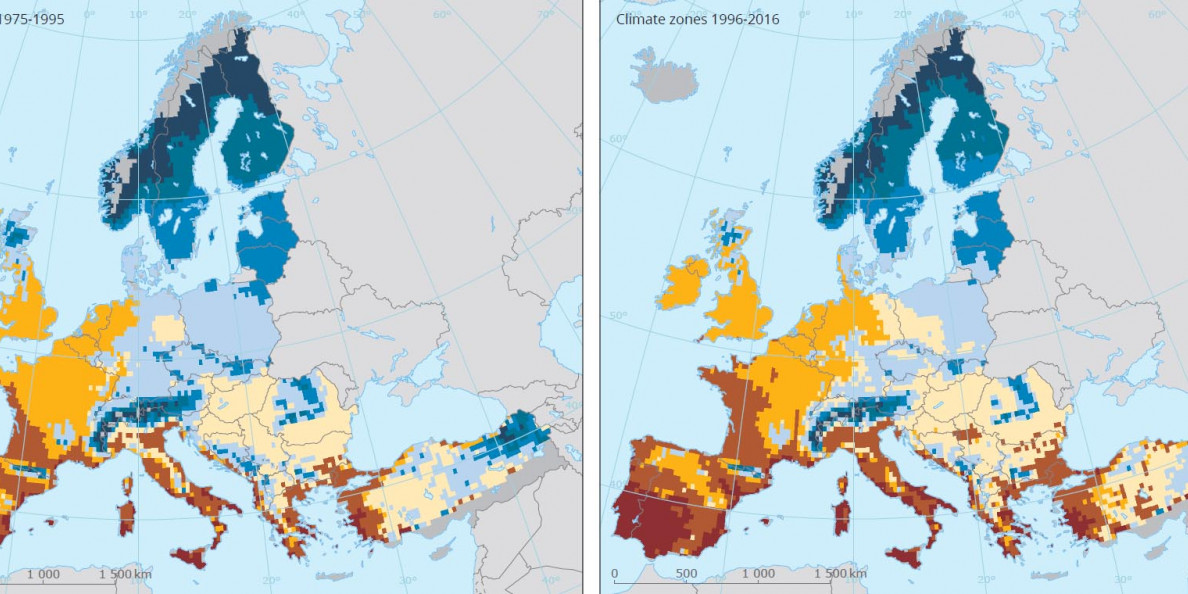According to the European Environment Agency (EEA)'s recent Climate change adaptation in the agriculture sector in Europe report, crop and livestock production is projected to decrease and may even have to be abandoned in parts of Europe’s southern and Mediterranean regions due to climate change.
The study, which was advised and reviewed by expert JRC scientists, says the EU's agricultural sector must make adapting to climate change a top priority if it is to improve resilience to extreme events such as droughts, heatwaves and floods.
Extreme weather already causing economic losses for EU agriculture
The economic effects of extreme weather, including the 2018 and 2019 summer heatwaves and droughts, are already being felt by the EU agricultural sector.
While climate change is projected to have some positive effects by improving crop-growing conditions in parts of northern and central Europe, these are likely to be outweighed by the negative effects of increased numbers of extreme events in southern Europe.
Under a high-end emission scenario, southern Europe is projected to face reduced yields of non-irrigated crops of up to 50% by 2050, and a reduction in farmland economic values of over 80% by 2100. While food security is not under threat in the EU, increased food demand worldwide could exert pressure on food prices in the coming decades.
Northern migration of European climate zones
The report was informed by a recent JRC article published in Earth's Future on the observed northward migration of European agro-climate zones - areas where the soil, rainfall, temperature and water availability influence the type of vegetation.
The JRC study shows that agro-climate zones have moved northwards over the past 40 years due to climate change. This migration is particularly evident in Eastern Europe, where the agro-climate zones have migrated northwards by 100 km every ten years.
The authors warn that the speed of this northward migration may double in the coming decades, no longer limited to just the East but affecting much of Europe.
The indicator-based assessment confirms the expected negative impacts of heat stress in much of southern and south-eastern Europe, with several Mediterranean regions becoming unsuitable for growing specific crops, for which production will move to northern European regions.
While global warming over Europe is causing the growing season to lengthen in northern and Eastern Europe, it is also leading to more frequent extreme climate events such as increased risk of early spring and summer heatwaves which may negate any crop gains.
Adaptation at farm level is key
Farming practices will need to adapt to changing climate conditions.
One of the objectives of the EU Adaptation Strategy is to mainstream adaptation in various EU policies, including the Common Agricultural Policy (CAP).
The EEA report calls for greater knowledge, innovation and awareness-raising to improve the effective use of already available adaptation measures, such as introducing adapted crops, improved irrigation techniques, field margins and agroforestry, crop diversification or precision farming.
These practices should also lead to lower greenhouse gas and air pollutant emissions, and better management of soil, land and water resources, which in turn will help preserve local ecosystems and biodiversity.
The report also suggests that EU Member States should better prioritise adaptation in the agricultural sector, for example by increasing the financing of adaptation measures through the implementation of the CAP.
Agriculture remains a driver of climate change
Today, the agricultural sector accounts for around 10% of all greenhouse gases (GHGs) in the EU, thus it needs to make concerted efforts to reduce its GHGs if EU greenhouse gas emission reduction targets are to be reached by 2030 and 2050.
To reduce GHG and air pollutant emissions, Europe needs to reshape its food system and reduce agricultural emissions through more sustainable farming and changes in consumer behaviour, such as eating less meat and reducing food waste.
Further information
- EEA Report 04/2019: Climate change adaptation in the agriculture sector in Europe
- Observed northward migration of agro-climate zones in Europe will further accelerate under climate change
- EU Adaptation Strategy
- Common Agricultural Policy


